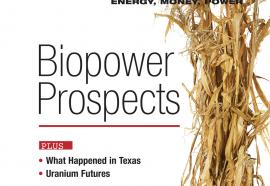Climate Burnout
Shale gas makes it easy to be green.
In terms of the political calculus, GHG regulation faces an uncertain future, at least into 2013. And as a flood of cheap gas erodes the perception of an impending environmental crisis, politicians will have less incentive to impose carbon constraints. Does shale gas signal the end of the road for greenhouse gas regulation?










